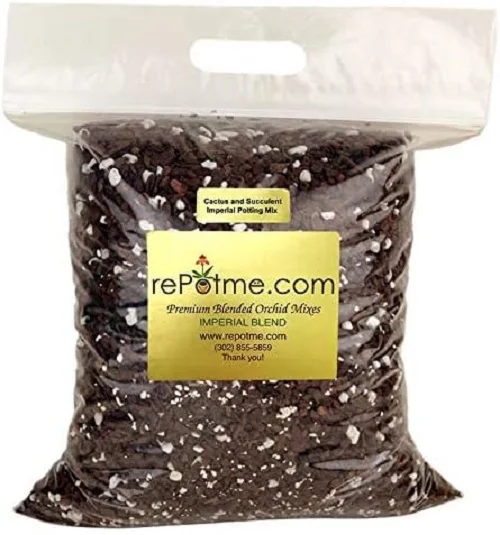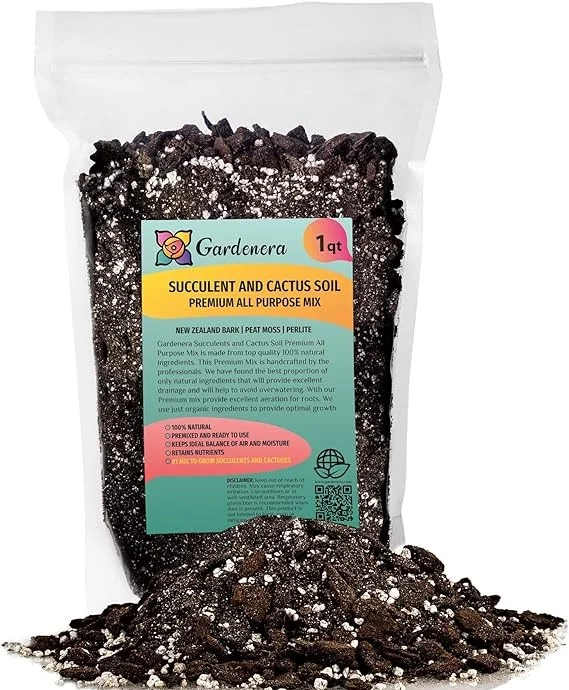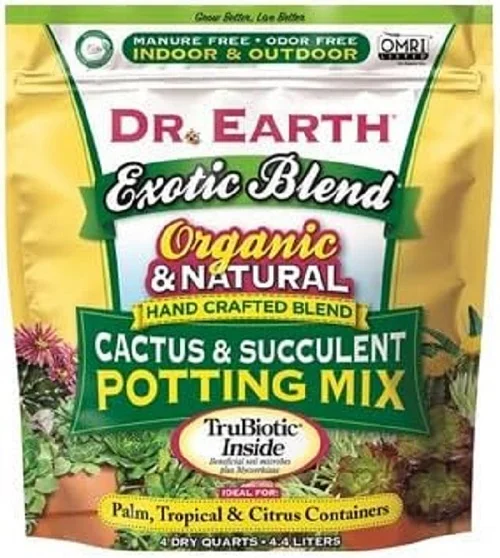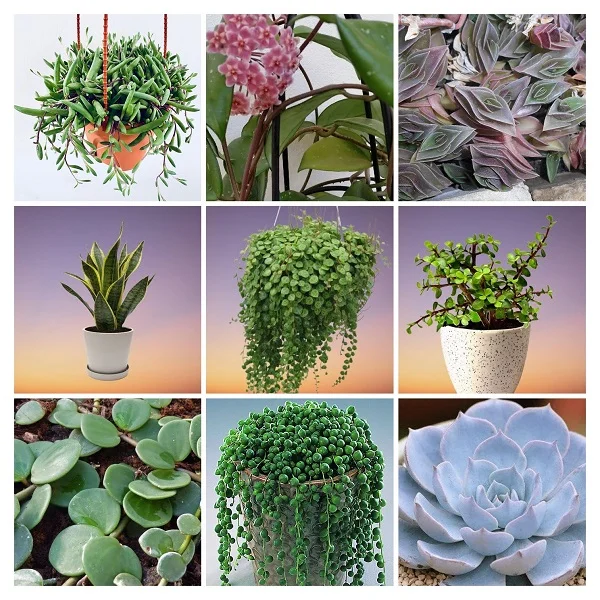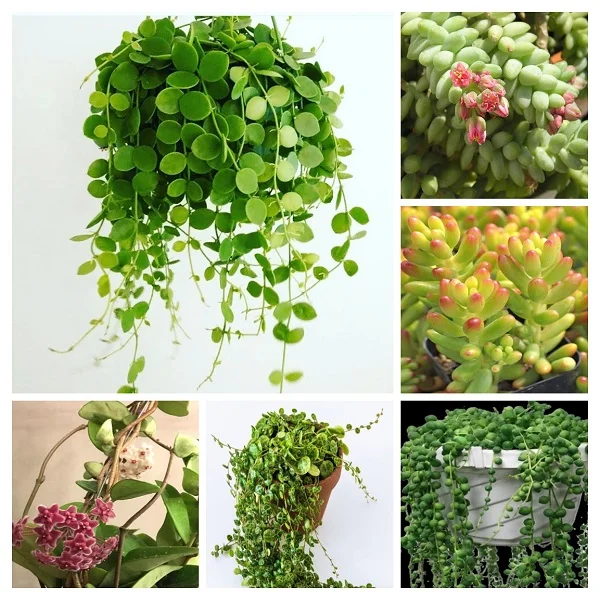Barberton Groundsel (Senecio barbertonicus) Indoor Care, Propagation, Problems & Solutions
Some links in this post may be affiliate links
Barberton Groundsel (Senecio barbertonicus) blossoms in bright light with some direct sunshine, average warmth, moderate humidity and moderately moist, rich, well-drained soils coupled with regular feeding in the growing season.
Senecio barbertonicus is a splendid houseplant when given the right growing conditions. In this guide, we look at everything you need to know about caring for this magnificent plant. First, let's learn some facts about this plant.
Barberton Groundsel also called Succulent Bush Senecio or Barberton Senecio is among perennial Senecio varieties and is densely packed with lime-green, finger-like, succulent leaves on fleshy stems.
The leaves are about 2-4 inches long and lie parallel to the fleshy stem and point upwards. The fleshy leaves and stems store water, which allows Barberton Senecio to go for a considerably long period without being watered placing it among the best drought-tolerant plants.
On account of its drought tolerance and need for bright light with exposure to some direct sunshine, Succulent Bush Senecio is one of the best succulents for full sun, perfect for a sunny spot.

Botanical name: Senecio barbertonicus
Synonmy: Kleinia barbertonica
Family: Asteraceae
Common names: Barberton Groundsel, Succulent Bush Senecio, Barberton Senecio
Origin
Senecio barbertonicus also called Kleinia barbertonica is a perennial, succulent plant native to Southern Africa in Mozambique, Swaziland, Zimbabwe and eastern part of South Africa where it grows in the substropical woodlands and rocky grasslands.
Barberton Senecio is a drought-tolerant succulent plant named after one of its native localities, Barberton, a town in Mpumalanga Province of South Africa.
Size
Barberton Groundsel can grow to a height of 6 feet by 6 feet wide but when grown indoors, the size can be limited by regular pruning. Based on its size, is among the best tree-like plants for the home or office space.
Flowers
The inflorescence is a cluster of tufted terminal flowerheads of golden-yellow, tubular-shaped and sweetly scented flowers.
Is Senecio barbertonicus poisonous?
Senecio barbertonicus like other Senecio species is toxic to humans and pets as outlined by ASPCA. They contain Pyrrolizidine alkaloids which if is ingested, can cause drooling, vomiting, diarrhea and lethargy.
Contact with the sap may cause skin irritation or skin rash in sensitive skin therefore, always wear gloves when handling the plant. Keep the plant away from the reach of children and pets to avoid mishaps.
How do you care for Senecio barbertonicus indoors?
To care for Senecio barbertonicus indoors, provide bright light with 4-6 hours of direct sunshine, average warmth of 20-260C, moderate humidity of 50-55% and moderately moist, rich, well-drained, succulents soils coupled with regular feeding during the growing season.
Senecio barbertonicus requires pruning to keep the plant neat, to discourage pest and disease infestation and encourage a bushy, compact growth. Repotting is only needed when the plant becomes pot-bound. Keep reading for more on these growing conditions and how to achieve them.
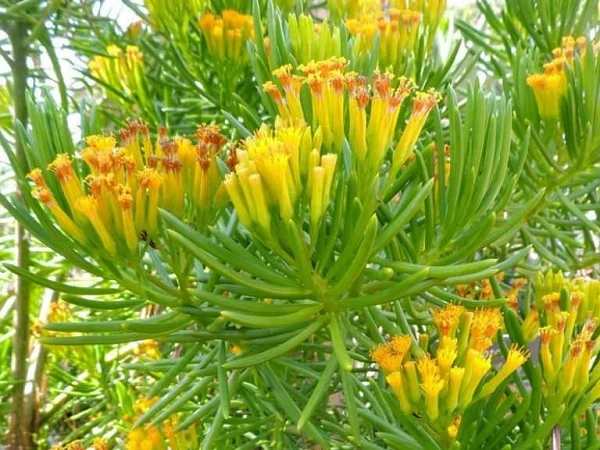
Watering
How often should I water Senecio barbertonicus?
Do not water your Senecio barbertonicus on a schedule. Water Senecio barbertonicus moderately in spring and summer and allow the top 2-3 inches of soil to dry out between waterings. Avoid overwatering to prevent yellowing and rotting.
Decrease watering in fall and winter to maintain the soil barely moist but do not allow the soil to dry out completely to avoid wilting and leaf drop.
Use water that is at room temperature to avoid shocking this tropical plant as it cause reduced growth and leaf drop.
Avoid wetting the foliage and ensure that there is good air circulation to prevent fungal diseases infestations.
Ensure that the pot has a drainage hole to prevent the soil from getting soggy as it can lead to rotting and death of the plant.
Light Requirements
Does Senecio barbertonicus need sunlight?
Yes. Senecio barbertonicus grows best in bright light with 4-6 hours of morning or late afternoon sunlight. Keep it away from hot midday sunshine to avoid scorching the leaves.
Too little light may result in yellowing and leggy growth. Where the natural lighting is not adequate, consider investing in a grow light to supplement it.
Regularly turn the pot to ensure that the plant receives light on all sides for a balanced growth.
Temperature and Humidity
Senecio barbertonicus thrives in an average warmth of 20-260C. Keep it away from drafts as they can cause leaf drop due to sudden changes in the temperatures.
Barberton Groundsel has no need for extra humidity. Average humidity of 50-55% is ideal for this plant. Ensure that there is good air circulation to discourage fungal disease infestations.
Fertilizer
Fertilize your Barberton Groundsel with a balanced, liquid fertilizer in spring and summer. Make sure to follow the manufacturer's instructions; the plant is not a heavy feeder so be careful when feeding.
Do not feed in fall and winter as growth is minimal at this time and feeding at this time can cause fertilizer burn and eventual death of the plant.
Potting Soil
What kind of soil does Senecio barbertonicus like?
The best soil for Senecio barbertonicus is a rich, sandy soil to avoid waterlogging. The soil should be loose enough to allow water to drain out fast enough. Cactus and succulents mixes are ideal for this plant.
Repotting
Barberton Groundsel has a small root system so frequent repotting is not necessary. Repot it at the beginning of the growing season only when it becomes crowded in its current pot.
Use a pot that is only 1 size larger than the current one. Make sure that the pot has has a drainage hole to prevent the soil from getting soggy to avoid rotting. Select a shallow pot as the root system is tiny and be careful not to bury the leaves to prevent rotting. Check out these pots with drainage holes on Amazon.
Pruning
Pruning Barberton Groundsel involves:
- Removal of any dead flowers, leaves and stems to keep the plant neat and also discourage pest and disease infestations.
- Cutting back overgrown and leggy stems at the beginning of the growing season to control growth and maintain the plant bushy and compact.
Senecio barbertonicus Propagation
How do you propagate Senecio barbertonicus?
Senecio barbertonicus (Barberton Groundsel) is propagated from stem cuttings, leaf cuttings or by plant division at the beginning of the growing season when the plant is actively growing.
1. Propagating Senecio barbertonicus from leaf cuttings
- Take leaf cuttings from a healthy plant and ensure each leaf cutting is whole.
- Allow 3-5 days for the formation of a protective callus tissue over the cuts of the leaf cuttings to prevent rotting.
- Insert 1-2 inches of the leaf cuttings in moist, succulents soil and lightly firm the soil around the cutting.
- Position the set up in a warm, well-lit place and maintain the soil moist until plantlets form at the base of the cuttings.
- Allow enough time for substantial growth of the roots and the new leaves.
- Carefully seperate the new plants and transfer into individual pots. For a fuller plant, transfer several plantlets into one pot.
- Water the soil thoroughly until water comes out through the drainage holes.
- Place the pots in warm place under bright light but away from direct sunlight to avoid scorching.
- Maintain the soil moist until the new plants are well established after which you can begin routine care.
2. Propagating Senecio barbertonicus from stem cuttings
- Take 3-5 inches stem cuttings from a healthy plant and allow the cuttings to dry (callus) for about 2-3 days.
- Insert 2-3 inches of the stem cuttings in moist, succulents soil and lightly press the soil around the cuttings.
- Place the set up in a warm, well-lit place and maintain the soil moist until the stems are rooted.
- Allow substancial growth before transplanting the new plants into one size larger pots after which you can begin routine care.
3. Propagating Senecio barbertonicus by plant division
- Water the plant thoroughly at least 1 day before to make it easier to divide and also hasten establishment.
- Slip the plant out of its pot and carefully divide it into sections by pulling apart the roots or cutting through with a sharp knife. Ensure each section has adequate roots to hasten establishment.
- Select a 6 or 8 inches pot and ensure that the pot has a drainage hole to prevent the soil from getting soggy as it can lead to rotting.
- Fill the pot with succulents soil and make a hole in the center of the pot. Ensure that the hole is slightly wider than the root base of the section.
- Place the section in the previously made hole and lightly firm the soil around the base while taking care not to bury it too deep; maintain the section at the same soil level as it was in the previous pot.
- Wet the soil thoroughly and place the set up in a well-lit, warm place until the new plant is well established after which you can begin routine care.
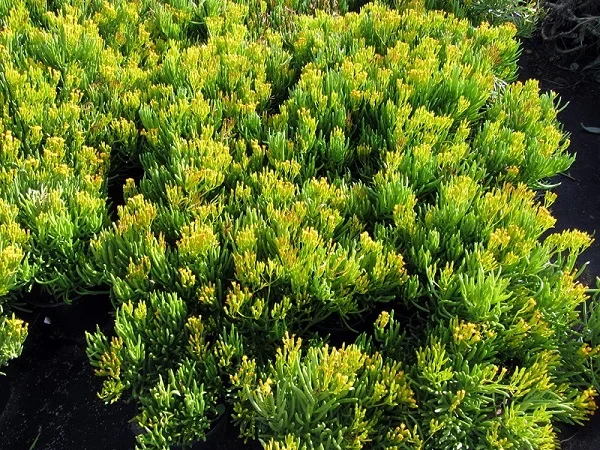
Senecio barbertonicus Problems & Remedies
Senecio barbertonicus (Barberton Groundsel) problems are plant dying, dropping leaves, drooping leaves, leggy stems, pests and diseases among others. Read on for more on these problems and how to fix them.
Plant dying
Why is my Senecio barbertonicus dying?
Your Senecio barbertonicus is dying due to root-rot which is prevalent in soggy soil. The disease presents as yellowing and wilting of the leaves which is rapidly followed by browning and plant collapse.
How to fix it
- Gently, slip the plant out of its pot and inspect the roots. Brown-black mushy roots indicate root-rot.
- Cut away the rotten roots and treat the healthy roots with a copper-based fungicidal solution as recommended by the manufacturer.
- Repot the plant in fresh soil and a fresh pot. Ensure that the pot has a drainage hole and the soil is well-draining to prevent it from getting soggy.
- Place the plant in bright light and withhold watering for a few days to give the plant enough time to loss the excess water. After the dry period, resume routine care.
Dropping leaves
Dropping leaves on Barberton Groundsel is caused by very cold water or underwatering.
How to fix it
Cold water: Being a tropical plant where temperatures are constantly warm, watering with too cold water will shock the plant. Therefore, use water that is at room temperature to avoid plant shock.
Underwatering: Water the plant moderately and allow the top 2-3 inches of soil to dry out but never allow the soil ball to dry out completely.
Drooping leaves
Drooping leaves on Senecio barbertonicus is caused by underwatering, soggy soil, and drafts.
How to fix it
Underwatering: Immediately, water the plant thoroughly and it should perk up.
Thereafter, water when the top 2-3 inches of soil to dry out but do not allow the soil to dry out completely.
Soggy soil: Use a pot with a drainage hole and well-draining soil.
Drafts: Keep the plant away from drafts emanating from AC units, stoves, windy doors, drafty windows and others.
Leggy stems
Leggy stems on Barberton Groundsel in fall and winter is due to overwatering or soggy soil. Water less in fall and winter to maintain the soil barely moist. Use a pot that has a drainage hole and well-draining soil.
If leggy growth occurs in spring and summer, then the cause is too little light. Move the plant to a brighter spot where it will receive bright light with 4-6 hours of direct sunlight or instal a grow light if the natural lighting is not adequate.
Turn the pot regularly to ensure that the plant receives light on all sides for uniform growth and prevent legginess
Pests
Common pests on Senecio barbertonicus are mealybugs, scale insects, and spider mites.
How to fix it
- Isolate the affected plant to prevent spread to other plants.
- Treat it with neem oil or insecticidal soap as per the manufacturer's instructions.
- Check underneath and between the leaves for these pests and carry out timely control measures.
- Keep the plant well pruned to discourage the pest infestations.
Diseases
Barberton Groundsel is also prone to leaf spot disease which is indicated by brown, soft, leaf spots. The disease is prevalent in damp, stuffy conditions.
How to fix it
- Isolate the affected plant and treat it with systemic fungicide as per the manufacturers' recommendations.
- Avoid wetting the leaves during watering to minimize the disease infestation; you may water from the bottom.
- Maintan a good air flow for the plant to discourage the disease.
You liked it? Share on social media.
Related Content
Amazon Associates Disclosure
Homeplantsguide.com is a participant in the Amazon Services LLC Associates Program, an affiliate advertising program designed to provide a means for sites to earn advertising fees by advertising and linking to amazon.com.
